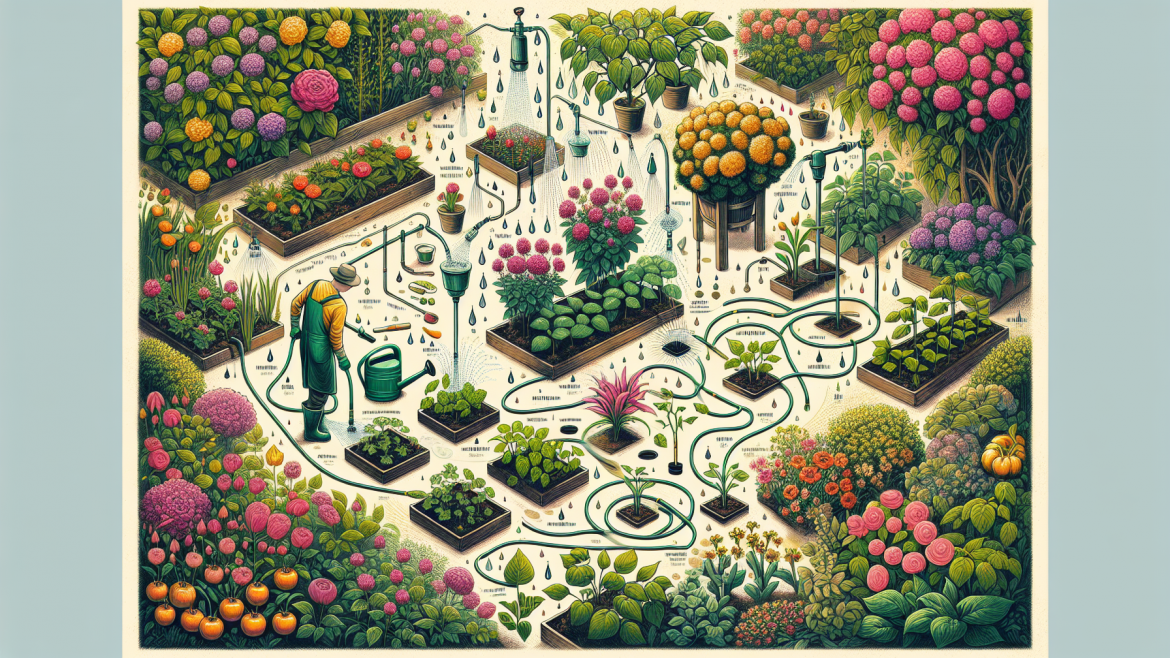Ensuring a healthy garden requires more than soil and sunlight; proper watering techniques are crucial for the growth and vitality of your plants. Understanding how, when, and how much to water can prevent issues such as root rot, wilting, and nutrient deficiency. This guide delves into the best watering practices to help you maintain a flourishing garden.
Understanding Plant Water Needs
Different plants have varied water requirements depending on their species, growth stage, and the environment in which they are grown. For instance, succulent plants will need less frequent watering compared to moisture-loving vegetables like tomatoes. It is important to research specific plant needs or observe the signs they exhibit to tailor your watering practices accordingly.
When to Water Your Garden
Timing your watering sessions can highly influence the health of your garden. The best time to water is early in the morning when temperatures are cooler and winds are calmer, hence reducing evaporation and allowing water to soak deeply into the soil. Alternatively, watering in the late afternoon or early evening can also be effective, but ensure the foliage dries before nightfall to prevent fungal diseases.
How Much Water Is Enough?
Over-watering and under-watering are common mistakes made by gardeners. Generally, the goal is to keep the soil consistently moist but not waterlogged. For most plants, providing about 1 inch of water per week, including rainfall, is sufficient during the growing season. Adjustments may be necessary based on soil type, weather conditions, and plant needs. Sandy soils require more frequent watering, whereas clay soils retain moisture longer and need less frequent watering.
Watering Methods
Utilizing the correct watering methods can significantly improve how efficiently water is delivered to your plant’s roots:
1. Deep Watering
Deep watering encourages roots to grow deeper into the soil, making plants more resilient during dry periods. Water slowly and thoroughly, allowing the water to reach at least 6 inches below the soil surface. This method is particularly useful for trees and shrubs.
2. Drip Irrigation
Drip irrigation systems are highly efficient as they deliver water directly to the plant’s root zone, minimizing water waste and reducing the likelihood of weed growth. These systems can be automated, ensuring regular and consistent watering.
3. Soaker Hoses
Soaker hoses are porous, allowing water to seep out slowly along their length. They are ideal for garden beds as they provide uniform watering with minimal runoff and evaporation.
4. Hand Watering
While hand watering with a hose or watering can allow for more control and flexibility, it requires more time and effort. It’s best used for small gardens or specific plants that need extra attention. Ensure to water at the base of the plants to keep foliage dry.
5. Mulching
Mulching helps retain soil moisture, reduce evaporation, and regulate soil temperature. Organic mulches like straw, wood chips, or compost gradually improve soil structure as they decompose, benefiting plant health long term. Apply mulch around plants but avoid piling it against plant stems to prevent rot.
Signs of Improper Watering
Signs of over-watering include yellowing leaves, root rot, and mold growth, whereas under-watering typically causes wilting, brittle leaves, and stunted growth. Regularly inspect your plants and adjust watering habits based on these indicators to ensure optimal health.
Conclusion
Proper watering techniques are essential to maintaining a healthy, vibrant garden. By understanding your plants’ needs, timing watering sessions appropriately, and using efficient watering methods, you can create an environment where your garden thrives. Remember, consistency and observation are key to successful gardening.
